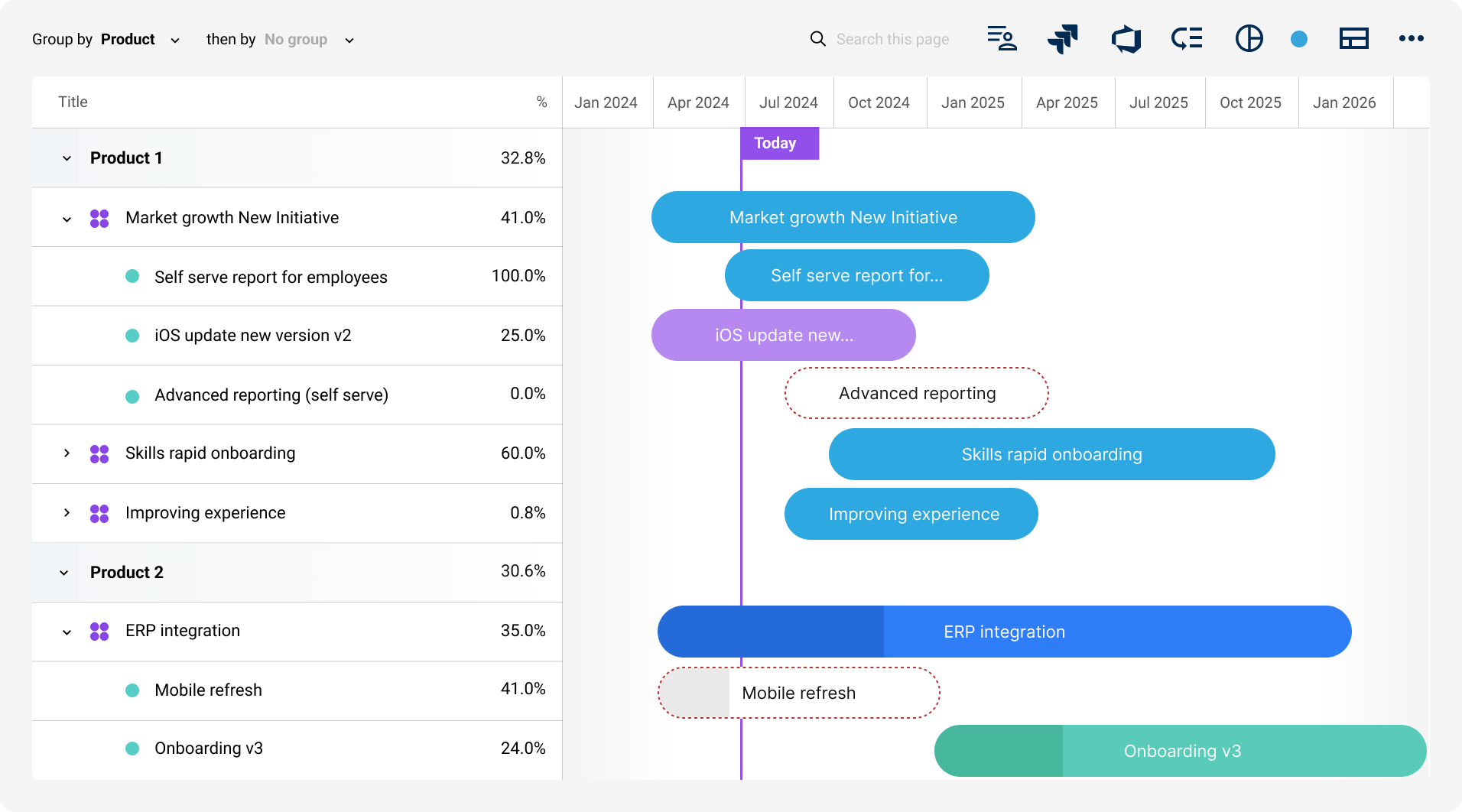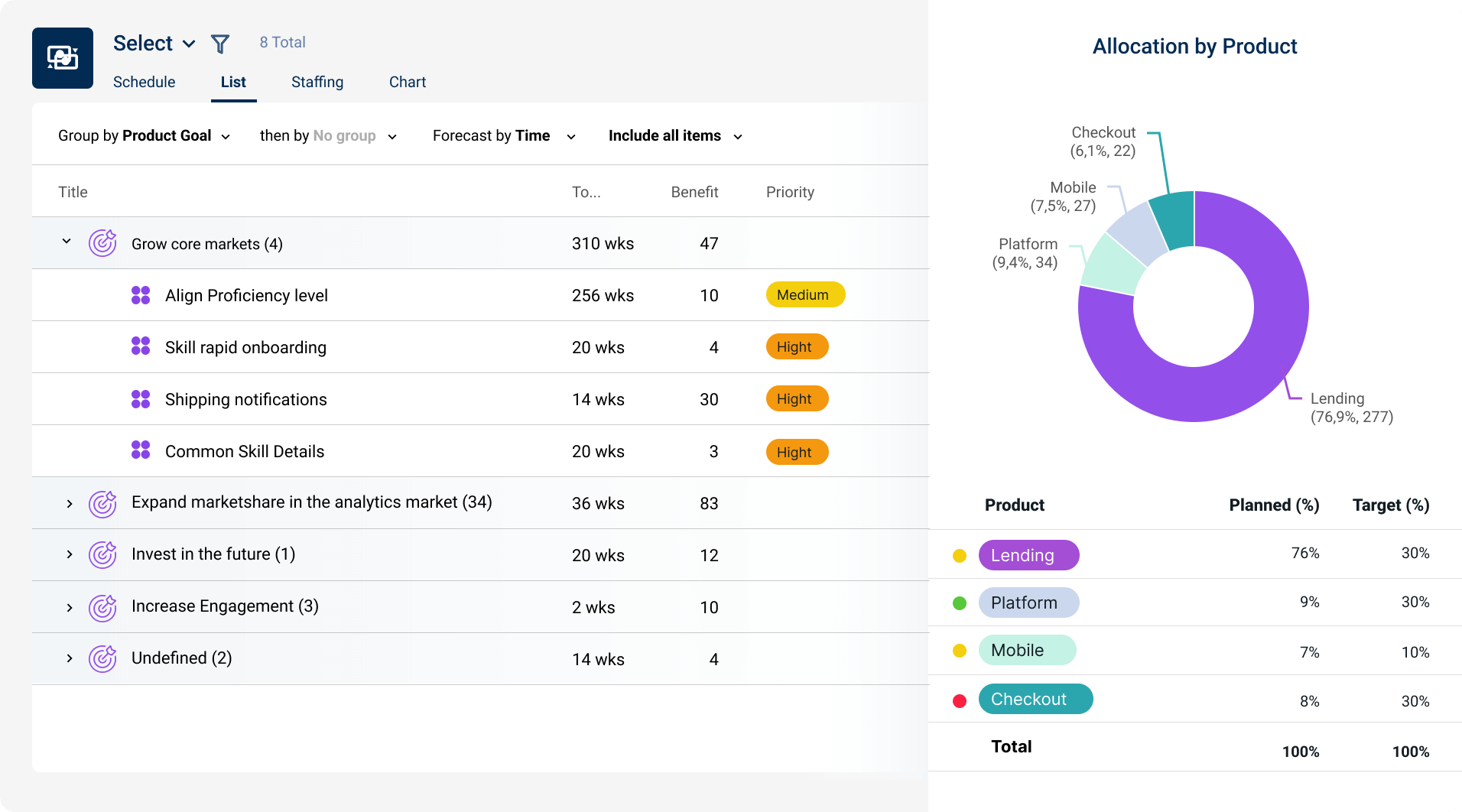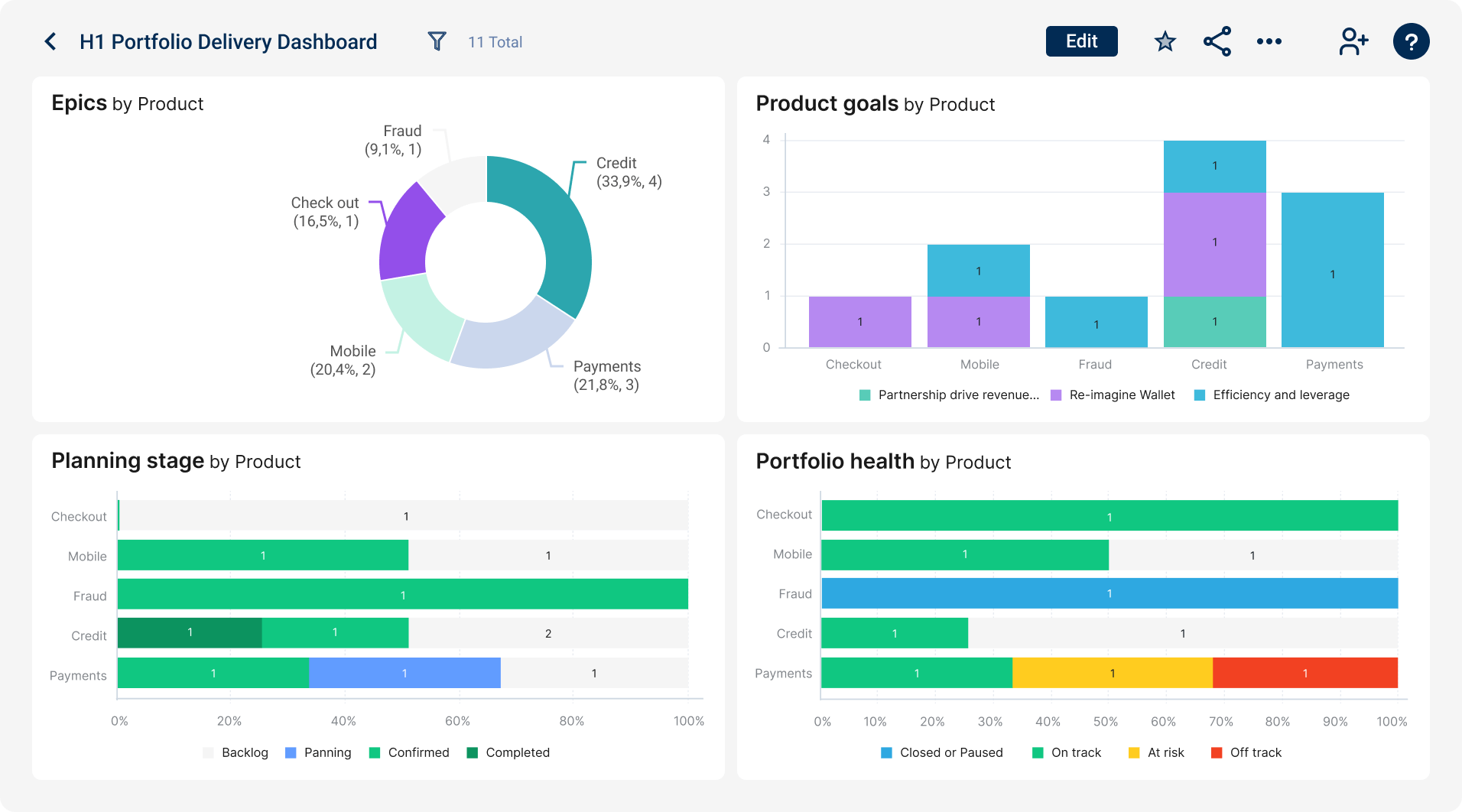Product Portfolio Management Tool: The Backbone of Product Teams
A Product Portfolio Management Tool (PPM tool) is an essential platform that helps product teams effectively manage their portfolio of products. It serves as the central hub for tracking, aligning, and optimizing product initiatives across the organization. Just as engineering teams rely on tools like Jira or Azure DevOps, sales teams use Salesforce, and support teams leverage Zendesk, product teams need a source of truth like Dragonboat to streamline their operations and ensure successful product outcomes.
A PPM tool is more than just a project management system—it’s the operating system for product teams, offering a comprehensive, centralized platform to manage the entire portfolio. By providing transparency, enabling collaboration, and offering critical insights, a PPM tool empowers Chief Product Officers (CPOs), Product Operations Leaders, and Portfolio Management Executives to make data-driven decisions and align teams around strategic goals.
What is a Product Portfolio Management Tool?
A PPM tool is designed to help product teams manage a diverse range of products throughout their lifecycle, from ideation to retirement. The tool centralizes key data, resources, and processes that are critical for making informed decisions about product prioritization, resource allocation, and risk management.
A PPM tool typically includes several core features:
- Portfolio Overview: A centralized dashboard that provides a high-level view of all products within the portfolio, allowing teams to quickly assess performance, track progress, and evaluate alignment with strategic business goals.
- Roadmapping: A key component of a PPM tool is its ability to create and manage roadmaps. This allows teams to visualize product plans, prioritize initiatives, and ensure that resources are allocated appropriately to meet both short- and long-term objectives.
- Resource Allocation: PPM tools help teams track available resources (e.g., budget, personnel, time) and ensure that they are allocated effectively across the product portfolio. This functionality allows for smarter decision-making to optimize product development and execution.
- Risk Management: With a PPM tool, product teams can identify, assess, and mitigate potential risks associated with product initiatives. This proactive approach ensures that teams are prepared to address challenges before they derail progress.
- Cross-Functional Collaboration: Effective product portfolio management requires collaboration across various teams, including engineering, marketing, sales, and customer support. A PPM tool provides a platform for cross-functional teams to align on goals, share information, and track progress in real-time.
- Data-Driven Insights: By integrating data from multiple sources, a PPM tool allows product teams to make data-driven decisions. Insights from past product performance, market trends, and customer feedback can be used to inform future strategies, improving product outcomes and driving business growth.
Why is a Product Portfolio Management Tool Important?
A PPM tool is crucial for several reasons:
- Centralized Information: A PPM tool ensures that all product-related information is stored in one place, reducing silos and improving transparency across the organization. This centralization ensures that product teams can easily access the data they need to make informed decisions and keep stakeholders updated on progress.
- Strategic Alignment: By using a PPM tool, product teams can ensure that their product initiatives are aligned with the company’s strategic goals. The tool allows teams to track objectives, evaluate product performance, and adjust priorities as needed to stay on track.
- Improved Decision-Making: With access to real-time data and performance metrics, a PPM tool enables product leaders to make better, more informed decisions. By having a clear view of the entire product portfolio, they can prioritize high-impact initiatives, allocate resources more effectively, and reduce risks.
- Efficiency Gains: A PPM tool helps product teams streamline their processes, reducing the time spent on administrative tasks and manual tracking. This allows teams to focus more on high-value activities, such as innovation, collaboration, and product development.
- Scalability: As companies grow and scale, managing multiple products becomes increasingly complex. A PPM tool allows product teams to manage this complexity by providing tools to track and prioritize products, manage resources, and ensure that the product portfolio continues to drive value as the organization expands.
Choosing the Right Product Portfolio Management Tool
When selecting a PPM tool, it’s important to consider the specific needs of your product organization. Here are some key factors to keep in mind:
- Scalability: As your product portfolio grows, your PPM tool should be able to handle increased complexity and scale with your business. Look for a tool that offers flexibility and customization to adapt to your evolving needs.
- Ease of Use: A good PPM tool should be intuitive and easy to use, ensuring that teams can quickly get up to speed without a steep learning curve. The tool should integrate seamlessly with other platforms your teams are already using, such as Jira, Salesforce, or Slack.
- Collaboration Features: Since product teams often work cross-functionally, choose a PPM tool that enables seamless collaboration. Look for features like real-time updates, shared roadmaps, and communication tools that keep everyone on the same page.
- Analytics and Reporting: Your PPM tool should provide robust analytics and reporting capabilities to help you track product performance, assess portfolio health, and make data-driven decisions.
Conclusion
A Product Portfolio Management Tool is a critical asset for any organization that needs to manage multiple products effectively. By providing a centralized platform for managing resources, aligning teams, and tracking performance, a PPM tool helps product leaders make smarter decisions, drive greater business value, and ensure that the entire portfolio is optimized for success.
For Chief Product Officers, Product Operations Leaders, and Portfolio Management Executives, leveraging a strategic PPM tool like Dragonboat helps streamline operations, enhance collaboration, and drive successful outcomes across the entire product portfolio.
Discover How To Choose The Right Product Portfolio Management System For Faster Outcomes.


